The Ancient Pharmacies of Venice
Related Tours
The Venetian Republic was famous for its advanced healthcare system, which included the establishment of Public Health Officers and the creation of the first lazzaretti (plague hospitals). Apothecaries were an important element of this system as well, and traces of their ancient activity can still be found around the city.
Historical Pharmacies
Some of the old pharmacies of Venice are still visible in town, as their beautiful wooden furniture has been preserved through the centuries.
The most famous of these is probably the Farmacia ai Do San Marchi (At the Two St. Marks), now in Ca’ Rezzonico, the Museum of 18th century Venice. The shop was originally located in Campo San Stin, but in 1908 the entire interior, dating to the 18th century, was sold to a French antique dealer and then donated to the city museums. Together with the wooden shelves and desks, the shop setting is complete with the pottery vases that were used to store herbs and medicines, and the glass tools necessary to prepare them.
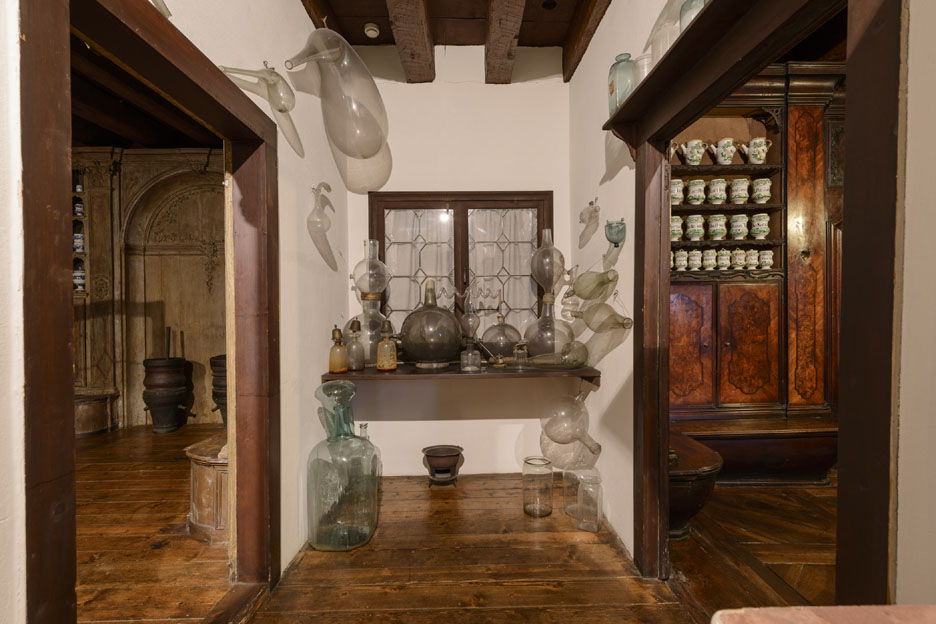
Another treasure from the Venetian Settecento is the pharmacy All’Ercole d’Oro (At the Golden Hercules) near campo Santa Fosca, which is decorated with wonderful baroque style wooden carvings.
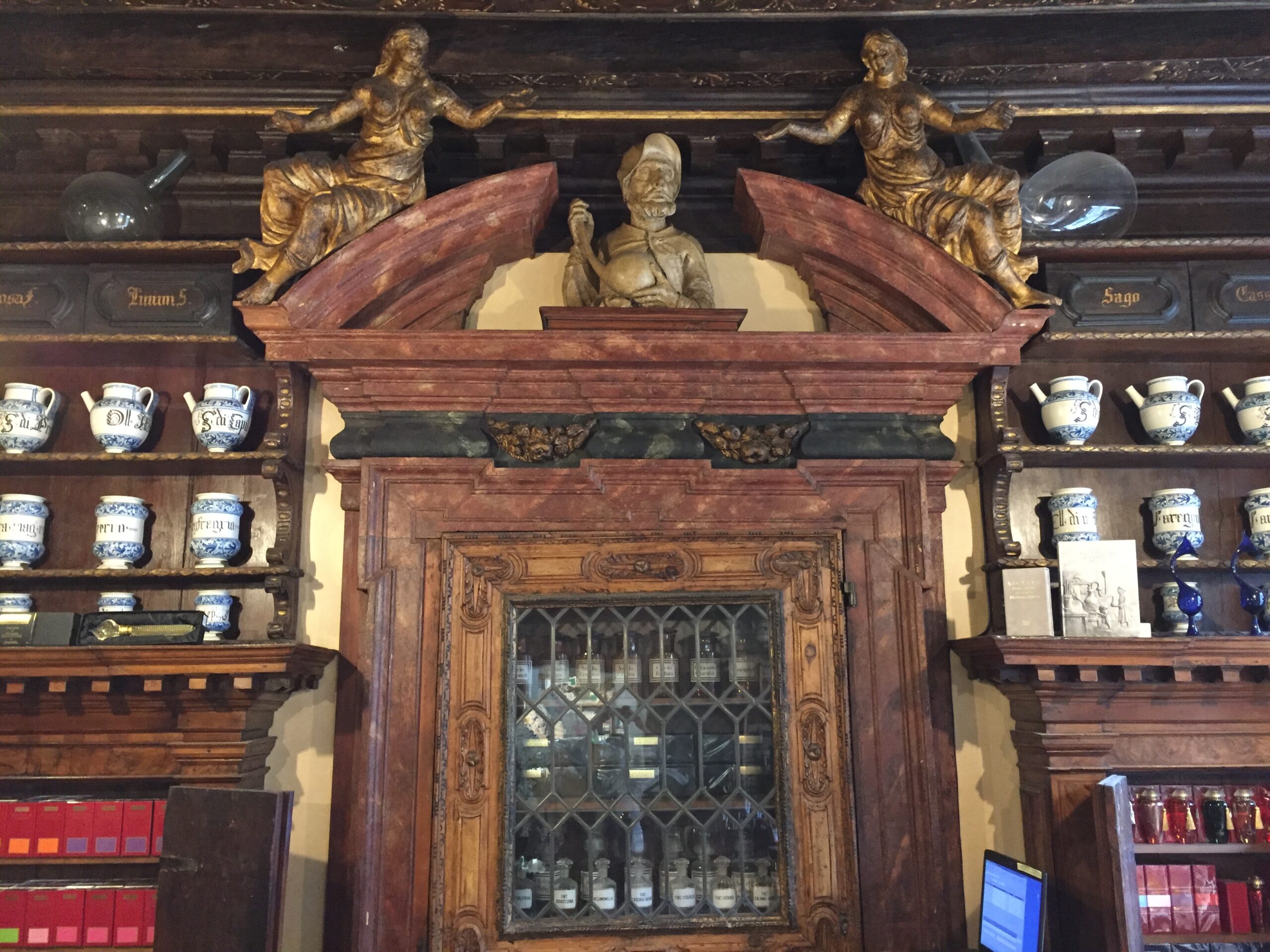
The 19th century pharmacy in Campo San Fantin, on the other hand, was designed by architect Giambattista Meduna in the Gothic Revival style of the time, and enriched with life size allegories of the different sciences.
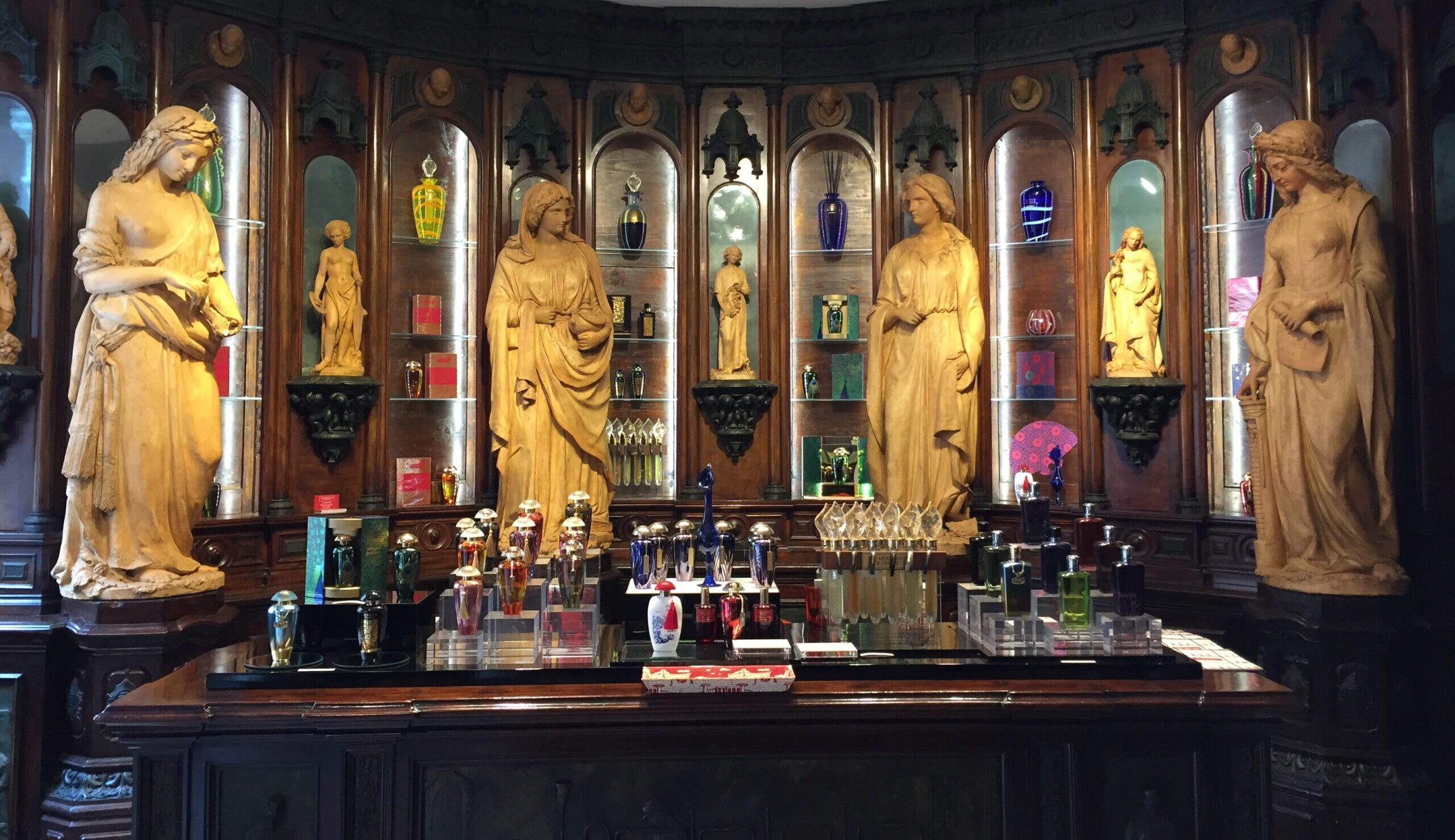
Near the main gate of the former Scuola Grande di San Marco, now the hospital of Venice, we can find a smaller door with the sign Farmacia above it: in the 19th century, in fact, this was the pharmacy for the city hospital. The space has been turned into a small museum where one can see the ancient pots and tools used by the pharmacists, as well as a collection of relics from the pathological anatomy department of the hospital.
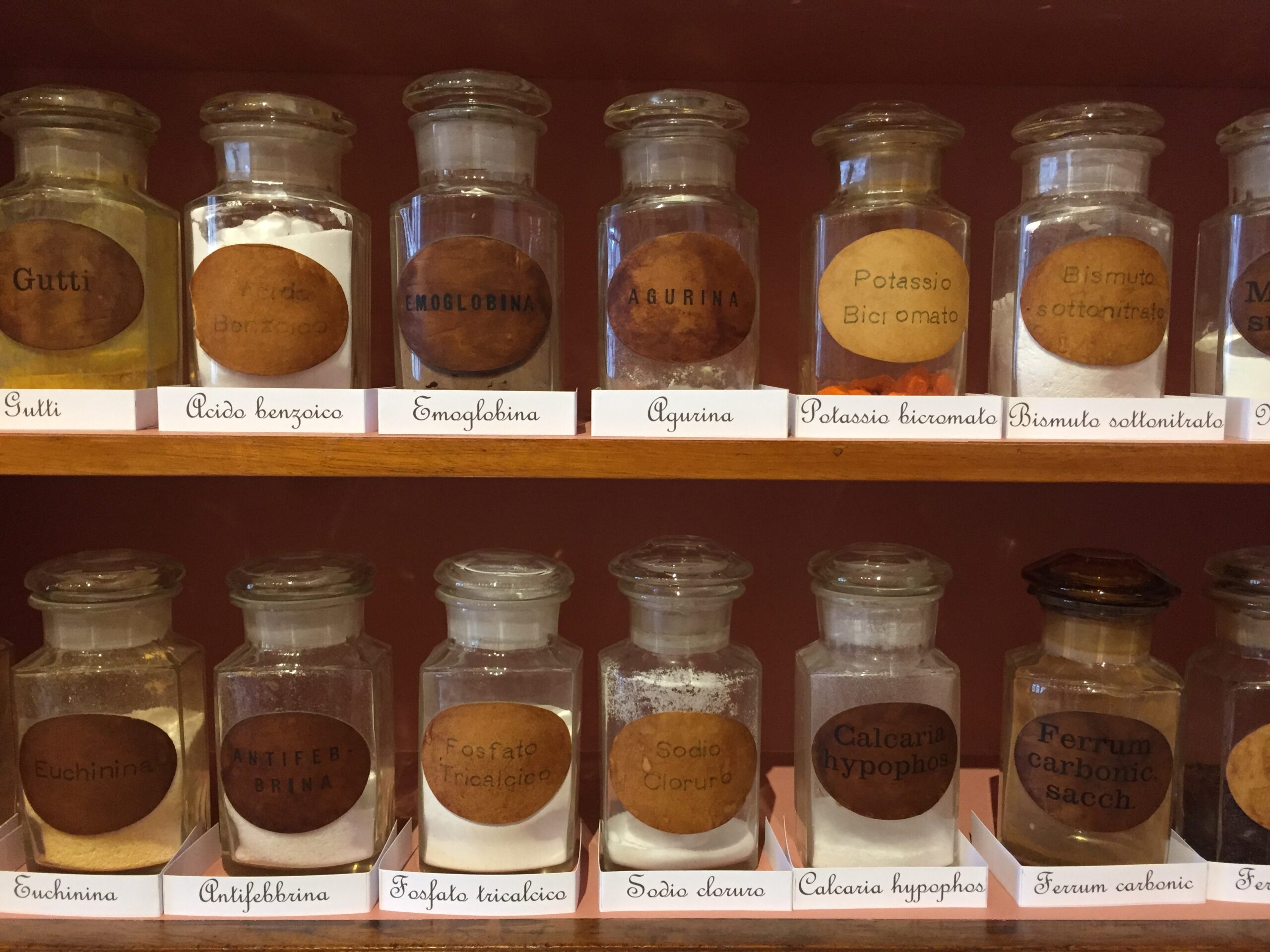
Old Shop Signs
Many of the present pharmacies in Venice still keep ancient shop names, including some funny ones like Al lupo coronato (At the Crowned Wolf) or Al Basilisco (At the Basilisk).
In some places we can even find traces of the old shop signs. One of these is visible in Campo San Polo, near the window of the Farmacia Burati Alla Colonna e Mezza: the name means “At the One and a Half Columns” and the oval relief on the wall shows, in fact, the image of one column and another one cut in half. According to tradition, the original name of the shop was Alle Due Colonne (At the Two Columns) but this created confusion because of the presence of another pharmacy with the same name in another part of the city. At the end of the 16th century, therefore, it was decided that the pharmacy in Campo San Polo had to “cut away” one half of its two columns!
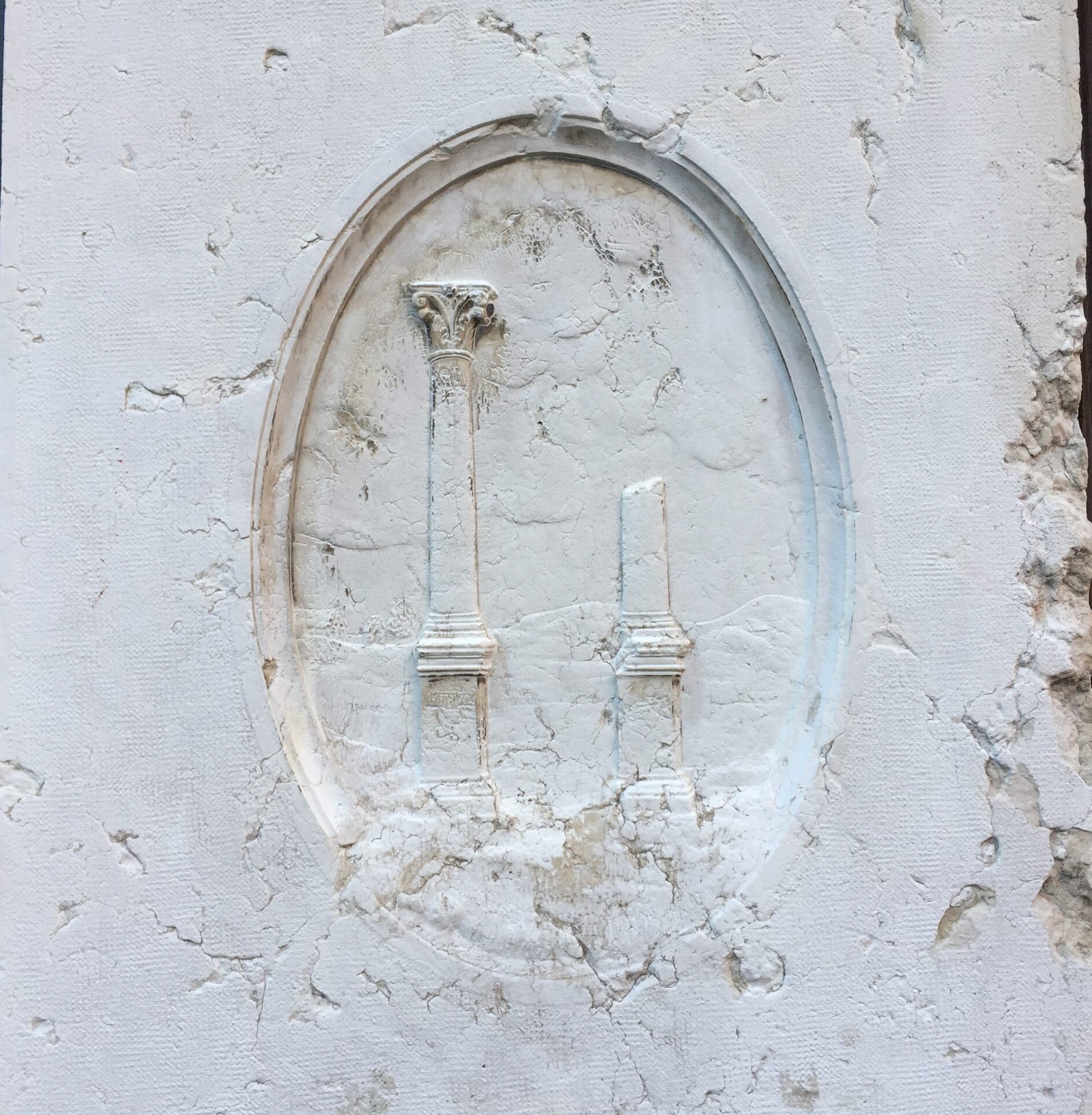
Another sign can be seen at the foot of the Rialto Bridge, hanging from the wall above a shop that is not a pharmacy any longer. It is a golden head reminding us of the famous pharmacy Alla Testa d’Oro (At the Golden Head).
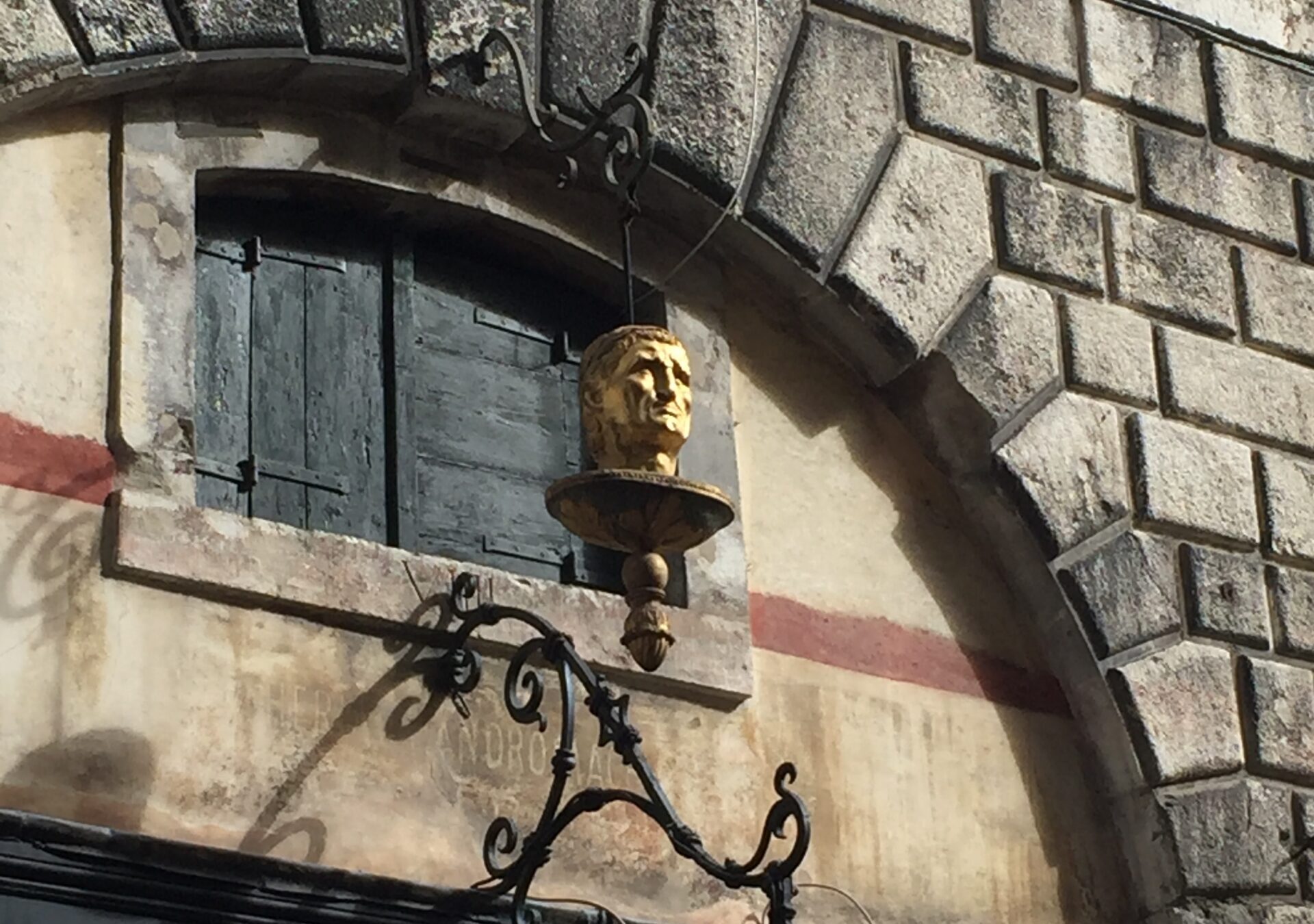
If you manage to read the faded inscription behind the sign, you’ll find the words “theriaca andromachi”… what does that mean?
The Teriaca
Venetian apothecaries were famous for the production of a powerful cure-all: the teriaca.
The name comes from the Greek théroin, meaning “wild beast”, because it was effective against the poisonous bites of beasts and because its main ingredient was viper’s meat. The origin of teriaca goes back to ancient Greek times, but the recipe was perfected by Andromaco, emperor Nero’s personal doctor. Thus the epithet andromachi.
Besides viper’s meat, the long list of ingredients (up to 60!!) included many herbs and spices that were to be found in the exotic lands where Venetian merchants regularly went to trade: this is probably why the teriacamade in Venice was considered the best, to the point that in English the medicine was specifically referred to as “Venetian Treacle”.
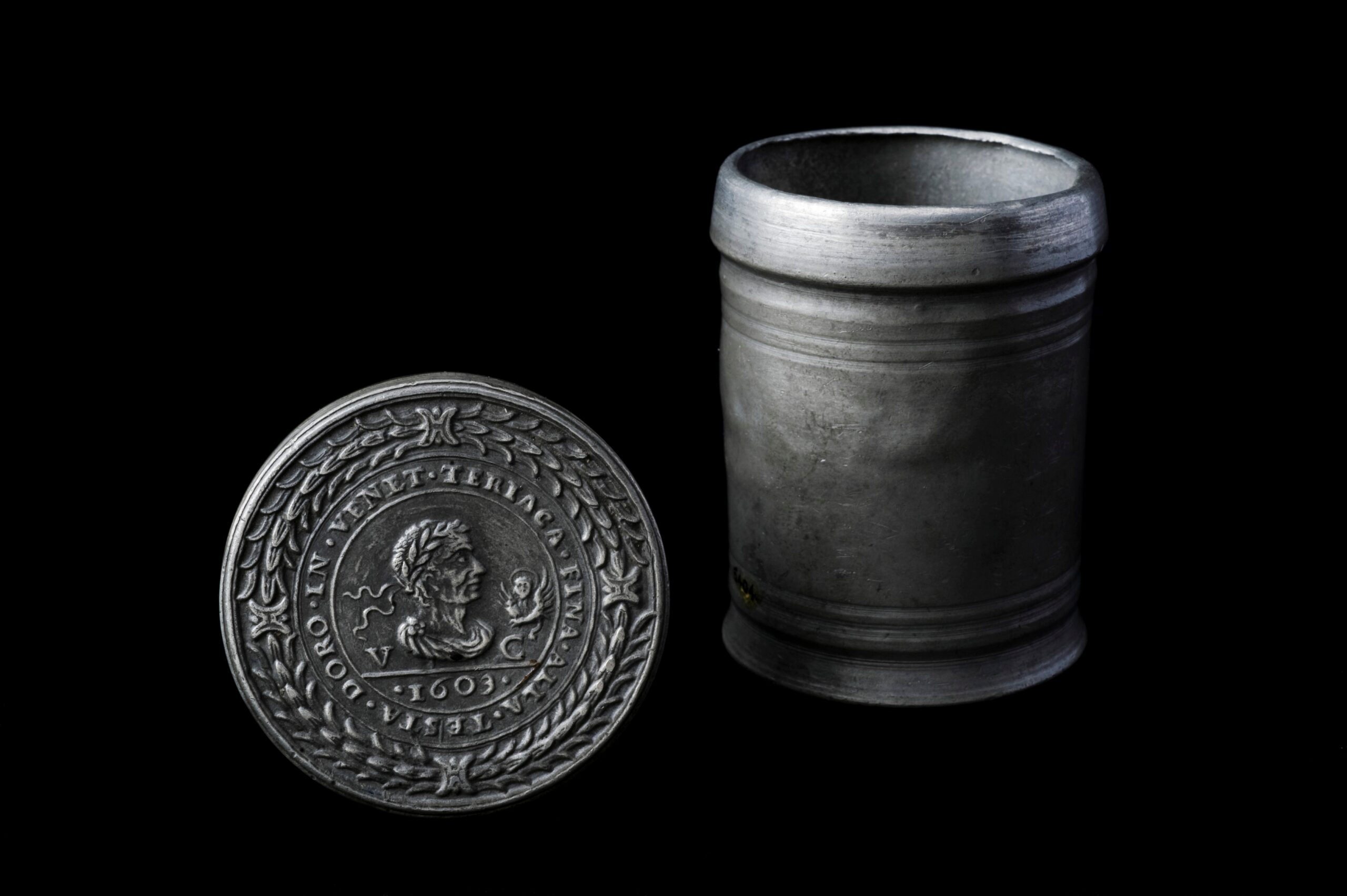
London, Science Museum, via wellcomecollection.org
Such was its fame and importance, that its production was controlled by the state and had to take place in public. In fact, walking by some historical pharmacies, you might notice some strange round signs on the ground: they are the traces of the cauldron that was placed in front of the shop for the preparation of the teriaca, a ritual that lasted several days.
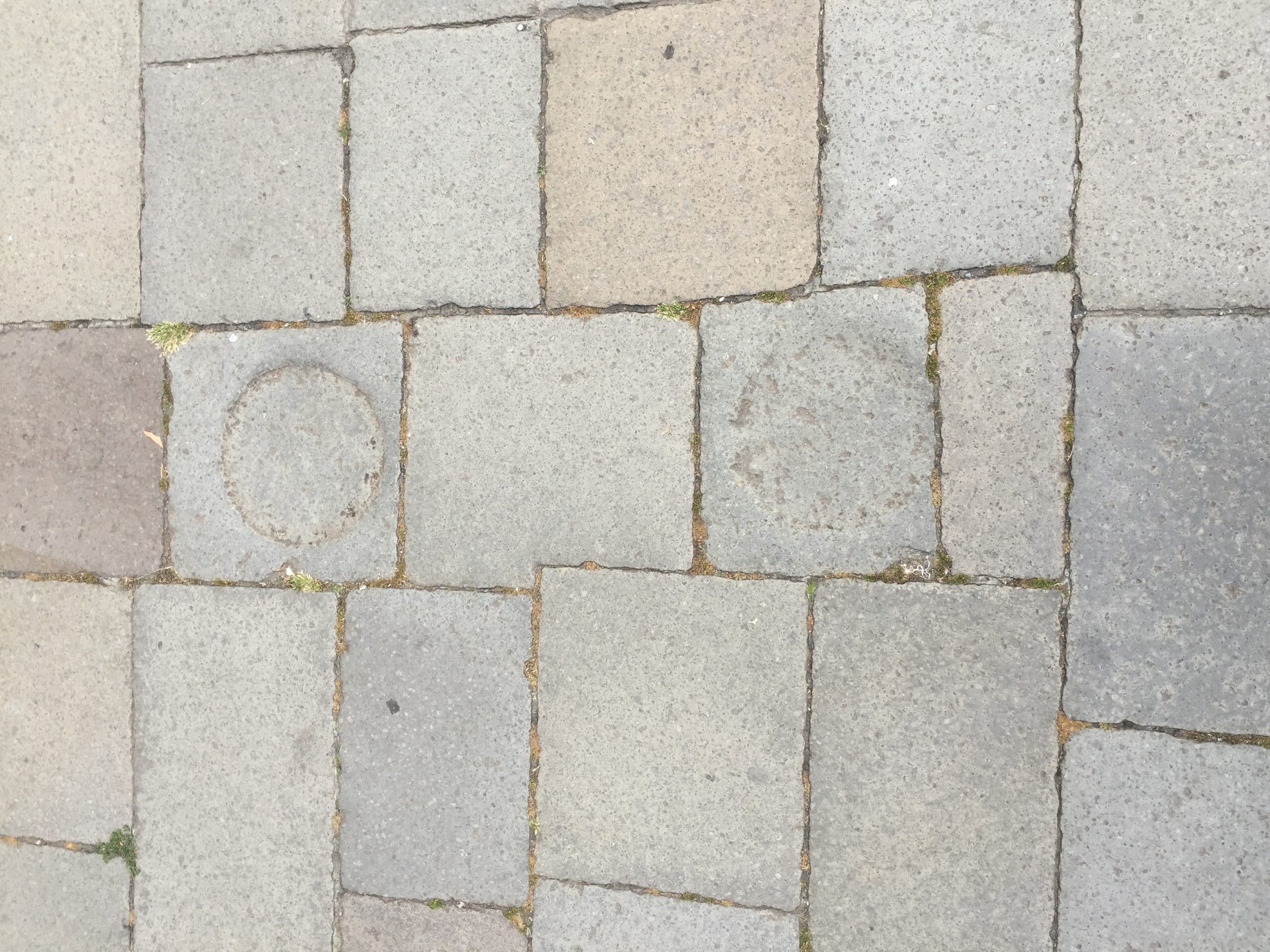
Would you like to discover more about the history of medicine in Venice? Take a tour with us!

